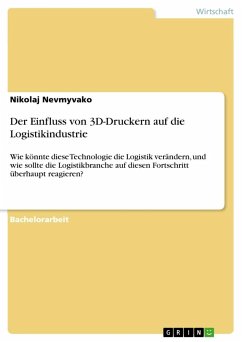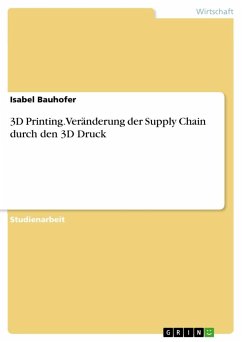Studienarbeit aus dem Jahr 2011 im Fachbereich BWL - Beschaffung, Produktion, Logistik, einseitig bedruckt, Note: A, Heriot-Watt-University Edinburgh, Veranstaltung: Logistics and Supply Chain Strategy, Sprache: Deutsch, Anmerkungen: Note A = 70 , Abstract: Rapid manufacturing can be defined as the use of a computer aided design (CAD)-based automated additive manufacturing process to construct parts that are used directly as finished products or components (Hopkinson, Hague and Dickens, 2006, p.1). In other words, it is a method where products or components are produced by printing digital data as a three-dimensional product using one of different layer-by-layer construction processes (Excell and Nathan, 2010). However, this idea of three-dimensional printing is not new. Formerly known as rapid prototyping, the technology is used for more than a decade to fabricate prototypes for many different areas (Burns and Howison, 2001; The Economist, 2011 a). Nonetheless, with recent research and development, improved fabbing machines have been developed that can already treat different materials such as ceramics, metals, nylons, polymers and others (Reeves, 2008; The Economist, 2011 b). For this reason, different companies of different industries have already started experimenting with rapid manufacturing as an alternative to traditional manufacturing (Excell and Nathan, 2010) in order to make use of the technology s benefits which undoubtedly exist. The aim of the available report is to illuminate these characteristics and benefits with respect to predicted impacts on the demand of logistics services as well as supply chains in particular. Furthermore, opportunities for logistics companies of gaining competitive advantages from the development of rapid manufacturing are being suggested.
Hinweis: Dieser Artikel kann nur an eine deutsche Lieferadresse ausgeliefert werden.
Hinweis: Dieser Artikel kann nur an eine deutsche Lieferadresse ausgeliefert werden.








